Yesterday’s message for the World Communications Day, in which Pope Francis focuses on the topic of fake news. A topical buzzword, understood here as ‘news’ that deceives and is not in service to the truth.
“The truth will set you free” (Jn 8:32). Fake news and journalism for peace
Dear Brothers and Sisters,
Communication is part of God’s plan for us and an essential way to experience fellowship. Made in the image and likeness of our Creator, we are able to express and share all that is true, good, and beautiful. We are able to describe our own experiences and the world around us, and thus to create historical memory and the understanding of events. But when we yield to our own pride and selfishness, we can also distort the way we use our ability to communicate. This can be seen from the earliest times, in the biblical stories of Cain and Abel and the Tower of Babel (cf. Gen 4:4-16; 11:1-9). The capacity to twist the truth is symptomatic of our condition, both as individuals and communities. On the other hand, when we are faithful to God’s plan, communication becomes an effective expression of our responsible search for truth and our pursuit of goodness.
In today’s fast-changing world of communications and digital systems, we are witnessing the spread of what has come to be known as “fake news”. This calls for reflection, which is why I have decided to return in this World Communications Day Message to the issue of truth, which was raised time and time again by my predecessors, beginning with Pope Paul VI, whose 1972 Message took as its theme: “Social Communications at the Service of Truth”. In this way, I would like to contribute to our shared commitment to stemming the spread of fake news and to rediscovering the dignity of journalism and the personal responsibility of journalists to communicate the truth.
1. What is “fake” about fake news?
The term “fake news” has been the object of great discussion and debate. In general, it refers to the spreading of disinformationon line or in the traditional media. It has to do with false information based on non-existent or distorted data meant to deceive and manipulate the reader. Spreading fake news can serve to advance specific goals, influence political decisions, and serve economic interests.
The effectiveness of fake news is primarily due to its ability to mimic real news, to seem plausible. Secondly, this false but believable news is “captious”, inasmuch as it grasps people’s attention by appealing to stereotypes and common social prejudices, and exploiting instantaneous emotions like anxiety, contempt, anger and frustration. The ability to spread such fake news often relies on a manipulative use of the social networks and the way they function. Untrue stories can spread so quickly that even authoritative denials fail to contain the damage.
The difficulty of unmasking and eliminating fake news is due also to the fact that many people interact in homogeneous digital environments impervious to differing perspectives and opinions. Disinformation thus thrives on the absence of healthy confrontation with other sources of information that could effectively challenge prejudices and generate constructive dialogue; instead, it risks turning people into unwilling accomplices in spreading biased and baseless ideas. The tragedy of disinformation is that it discredits others, presenting them as enemies, to the point of demonizing them and fomenting conflict. Fake news is a sign of intolerant and hypersensitive attitudes, and leads only to the spread of arrogance and hatred. That is the end result of untruth.
2. How can we recognize fake news?
None of us can feel exempted from the duty of countering these falsehoods. This is no easy task, since disinformation is often based on deliberately evasive and subtly misleading rhetoric and at times the use of sophisticated psychological mechanisms. Praiseworthy efforts are being made to create educational programmes aimed at helping people to interpret and assess information provided by the media, and teaching them to take an active part in unmasking falsehoods, rather than unwittingly contributing to the spread of disinformation. Praiseworthy too are those institutional and legal initiatives aimed at developing regulations for curbing the phenomenon, to say nothing of the work being done by tech and media companies in coming up with new criteria for verifying the personal identities concealed behind millions of digital profiles.
Yet preventing and identifying the way disinformation works also calls for a profound and careful process of discernment. We need to unmask what could be called the “snake-tactics” used by those who disguise themselves in order to strike at any time and place. This was the strategy employed by the “crafty serpent” in the Book of Genesis, who, at the dawn of humanity, created the first fake news (cf. Gen 3:1-15), which began the tragic history of human sin, beginning with the first fratricide (cf. Gen 4) and issuing in the countless other evils committed against God, neighbour, society and creation. The strategy of this skilled “Father of Lies” (Jn 8:44) is precisely mimicry, that sly and dangerous form of seduction that worms its way into the heart with false and alluring arguments.
In the account of the first sin, the tempter approaches the woman by pretending to be her friend, concerned only for her welfare, and begins by saying something only partly true: “Did God really say you were not to eat from any of the trees in the garden?” (Gen 3:1). In fact, God never told Adam not to eat from any tree, but only from the one tree: “Of the tree of the knowledge of good and evil you are not to eat” (Gen 2:17). The woman corrects the serpent, but lets herself be taken in by his provocation: “Of the fruit of the tree in the middle of the garden God said, “You must not eat it nor touch it, under pain of death” (Gen 3:2). Her answer is couched in legalistic and negative terms; after listening to the deceiver and letting herself be taken in by his version of the facts, the woman is misled. So she heeds his words of reassurance: “You will not die!” (Gen 3:4).
The tempter’s “deconstruction” then takes on an appearance of truth: “God knows that on the day you eat it your eyes will be opened and you will be like gods, knowing good and evil” (Gen 3:5). God’s paternal command, meant for their good, is discredited by the seductive enticement of the enemy: “The woman saw that the tree was good to eat and pleasing to the eye and desirable” (Gen 3:6). This biblical episode brings to light an essential element for our reflection: there is no such thing as harmless disinformation; on the contrary, trusting in falsehood can have dire consequences. Even a seemingly slight distortion of the truth can have dangerous effects.
What is at stake is our greed. Fake news often goes viral, spreading so fast that it is hard to stop, not because of the sense of sharing that inspires the social media, but because it appeals to the insatiable greed so easily aroused in human beings. The economic and manipulative aims that feed disinformation are rooted in a thirst for power, a desire to possess and enjoy, which ultimately makes us victims of something much more tragic: the deceptive power of evil that moves from one lie to another in order to rob us of our interior freedom. That is why education for truth means teaching people how to discern, evaluate and understand our deepest desires and inclinations, lest we lose sight of what is good and yield to every temptation.
3. “The truth will set you free” (Jn 8:32)
Constant contamination by deceptive language can end up darkening our interior life. Dostoevsky’s observation is illuminating: “People who lie to themselves and listen to their own lie come to such a pass that they cannot distinguish the truth within them, or around them, and so lose all respect for themselves and for others. And having no respect, they cease to love, and in order to occupy and distract themselves without love they give way to passions and to coarse pleasures, and sink to bestiality in their vices, all from continual lying to others and to themselves.” (The Brothers Karamazov, II, 2).
So how do we defend ourselves? The most radical antidote to the virus of falsehood is purification by the truth. In Christianity, truth is not just a conceptual reality that regards how we judge things, defining them as true or false. The truth is not just bringing to light things that are concealed, “revealing reality”, as the ancient Greek term aletheia (from a-lethès, “not hidden”) might lead us to believe. Truth involves our whole life. In the Bible, it carries with it the sense of support, solidity, and trust, as implied by the root ‘aman, the source of our liturgical expression Amen. Truth is something you can lean on, so as not to fall. In this relational sense, the only truly reliable and trustworthy One – the One on whom we can count – is the living God. Hence, Jesus can say: “I am the truth” (Jn 14:6). We discover and rediscover the truth when we experience it within ourselves in the loyalty and trustworthiness of the One who loves us. This alone can liberate us: “The truth will set you free” (Jn 8:32).
Freedom from falsehood and the search for relationship: these two ingredients cannot be lacking if our words and gestures are to be true, authentic, and trustworthy. To discern the truth, we need to discern everything that encourages communion and promotes goodness from whatever instead tends to isolate, divide, and oppose. Truth, therefore, is not really grasped when it is imposed from without as something impersonal, but only when it flows from free relationships between persons, from listening to one another. Nor can we ever stop seeking the truth, because falsehood can always creep in, even when we state things that are true. An impeccable argument can indeed rest on undeniable facts, but if it is used to hurt another and to discredit that person in the eyes of others, however correct it may appear, it is not truthful. We can recognize the truth of statements from their fruits: whether they provoke quarrels, foment division, encourage resignation; or, on the other hand, they promote informed and mature reflection leading to constructive dialogue and fruitful results.
4. Peace is the true news
The best antidotes to falsehoods are not strategies, but people: people who are not greedy but ready to listen, people who make the effort to engage in sincere dialogue so that the truth can emerge; people who are attracted by goodness and take responsibility for how they use language. If responsibility is the answer to the spread of fake news, then a weighty responsibility rests on the shoulders of those whose job is to provide information, namely, journalists, the protectors of news. In today’s world, theirs is, in every sense, not just a job; it is a mission. Amid feeding frenzies and the mad rush for a scoop, they must remember that the heart of information is not the speed with which it is reported or its audience impact, but persons. Informing others means forming others; it means being in touch with people’s lives. That is why ensuring the accuracy of sources and protecting communication are real means of promoting goodness, generating trust, and opening the way to communion and peace.
I would like, then, to invite everyone to promote a journalism of peace. By that, I do not mean the saccharine kind of journalism that refuses to acknowledge the existence of serious problems or smacks of sentimentalism. On the contrary, I mean a journalism that is truthful and opposed to falsehoods, rhetorical slogans, and sensational headlines. A journalism created by people for people, one that is at the service of all, especially those – and they are the majority in our world – who have no voice. A journalism less concentrated on breaking news than on exploring the underlying causes of conflicts, in order to promote deeper understanding and contribute to their resolution by setting in place virtuous processes. A journalism committed to pointing out alternatives to the escalation of shouting matches and verbal violence.
To this end, drawing inspiration from a Franciscan prayer, we might turn to the Truth in person:
Lord, make us instruments of your peace.
Help us to recognize the evil latent in a communication that does not build communion.
Help us to remove the venom from our judgements.
Help us to speak about others as our brothers and sisters.
You are faithful and trustworthy; may our words be seeds of goodness for the world:
where there is shouting, let us practise listening;
where there is confusion, let us inspire harmony;
where there is ambiguity, let us bring clarity;
where there is exclusion, let us offer solidarity;
where there is sensationalism, let us use sobriety;
where there is superficiality, let us raise real questions;
where there is prejudice, let us awaken trust;
where there is hostility, let us bring respect;
where there is falsehood, let us bring truth.
Amen.
From the Vatican, 24 January 2018, the Memorial of Saint Francis de Sales.
FRANCIS
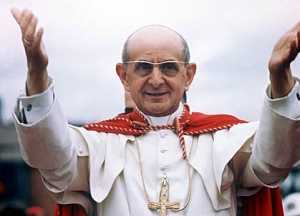 Although he was canonised last October, the liturgical texts for the memorial of Pope Saint Paul VI were published only today. The official decree clarifies a few things related to the annual feast day of the new saint: not only the status of his feast (an optional memorial), but also the texts that should be used in the celebration of Mass, the exact notation in the Martyrology and the texts for the Liturgy of the Hours.
Although he was canonised last October, the liturgical texts for the memorial of Pope Saint Paul VI were published only today. The official decree clarifies a few things related to the annual feast day of the new saint: not only the status of his feast (an optional memorial), but also the texts that should be used in the celebration of Mass, the exact notation in the Martyrology and the texts for the Liturgy of the Hours. Early last week, Cardinal Müller was in the Netherlands to speak at a congress about recently canonised Pope Paul VI and Vatican II. Katholiek Nieuwsblad (which, as an aside, has recently been expanding its media work abroad, providing translated articles to
Early last week, Cardinal Müller was in the Netherlands to speak at a congress about recently canonised Pope Paul VI and Vatican II. Katholiek Nieuwsblad (which, as an aside, has recently been expanding its media work abroad, providing translated articles to 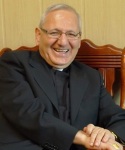 Louis Raphael I Cardinal Sako, Cardinal-Bishop, Patriach of Babylon (Chaldean), Iraq. The second Patriarch of Babylon to be made a cardinal, and also the second Iraqi prelate. 69-year-old Patriarch Sako was appointed to Babylon and the leadership of the Chaldean Church in 2013. Before that he was the Metropolitan Archbishop of Kirkuk. As an eastern Patriarch, Cardinal Sako will automatically be a cardinal-bishop, but as a member of a non-Roman Catholic Church, albeit one in union with Rome, he will not be given a title church.
Louis Raphael I Cardinal Sako, Cardinal-Bishop, Patriach of Babylon (Chaldean), Iraq. The second Patriarch of Babylon to be made a cardinal, and also the second Iraqi prelate. 69-year-old Patriarch Sako was appointed to Babylon and the leadership of the Chaldean Church in 2013. Before that he was the Metropolitan Archbishop of Kirkuk. As an eastern Patriarch, Cardinal Sako will automatically be a cardinal-bishop, but as a member of a non-Roman Catholic Church, albeit one in union with Rome, he will not be given a title church. Luis Francisco Cardinal Ferrer, Cardinal-Deacon, Prefect of the Congregation for the Doctrine of the Faith. Ever since the popes ceased to head the chief office in the curia themselves, its prefects have been made cardinals. 74-year-old Spanish Jesuit Ladaria Ferrer, formerly the second in command under Cardinal Müller, receives the red hat a year after being made prefect.
Luis Francisco Cardinal Ferrer, Cardinal-Deacon, Prefect of the Congregation for the Doctrine of the Faith. Ever since the popes ceased to head the chief office in the curia themselves, its prefects have been made cardinals. 74-year-old Spanish Jesuit Ladaria Ferrer, formerly the second in command under Cardinal Müller, receives the red hat a year after being made prefect.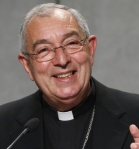 Angelo Cardinal de Donatis, Cardinal-Priest, Vicar General of Rome. Another almost automatic red hat, even under Pope Francis, goes to the vicar general for the vicariate of Rome. The 64-year-old is the second cardinal in the Roman archdiocese, joining Cardinal Angelo Comastri, the vicar general for Vatican City.
Angelo Cardinal de Donatis, Cardinal-Priest, Vicar General of Rome. Another almost automatic red hat, even under Pope Francis, goes to the vicar general for the vicariate of Rome. The 64-year-old is the second cardinal in the Roman archdiocese, joining Cardinal Angelo Comastri, the vicar general for Vatican City. Giovanni Angelo Cardinal Becciu, Cardinal-Deacon, Substitute of the Secretariat of State. All of Cardinal-elect Becciu’s predecessors have been made cardinals, but none while serving as subsistutes in the Secretariat of State. The general expectation is that the 69-year-old Italian will also leave that office soon: he may well suceed Cardinal Angelo Amato, who will turn 80 in June, at the head of the Congregation for the Causes of Saints.
Giovanni Angelo Cardinal Becciu, Cardinal-Deacon, Substitute of the Secretariat of State. All of Cardinal-elect Becciu’s predecessors have been made cardinals, but none while serving as subsistutes in the Secretariat of State. The general expectation is that the 69-year-old Italian will also leave that office soon: he may well suceed Cardinal Angelo Amato, who will turn 80 in June, at the head of the Congregation for the Causes of Saints.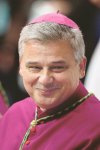 Konrad Cardinal Krajewski, Cardinal-Deacon, Almoner of the Office of Papal Charities. Without doubt the highest-regarded curial official in Francis’ Rome, the 54-year-old Polish almoner runs the charitable initiatives on behalf of the pope in Rome. Under his responsibility, showers and barber facilities for homeless have been installed in the colonnades of St. Peter’s Square, to name but one example. Cardinal-elect Krajewski is the first papal almoner to be made a cardinal.
Konrad Cardinal Krajewski, Cardinal-Deacon, Almoner of the Office of Papal Charities. Without doubt the highest-regarded curial official in Francis’ Rome, the 54-year-old Polish almoner runs the charitable initiatives on behalf of the pope in Rome. Under his responsibility, showers and barber facilities for homeless have been installed in the colonnades of St. Peter’s Square, to name but one example. Cardinal-elect Krajewski is the first papal almoner to be made a cardinal. Joseph Cardinal Coutts, Cardinal-Priest, Archbishop of Karachi, Pakistan. The second Pakistani cardinal, and the first native of that country to receive the red hat, ever. Cardinal-elect Coutts, 72, has been in the country’s southern metropolis since 2012, following stints in the dioceses of Hyderabad and Faisalabad. His election must be seen in the first place as a sign of support for the small Catholic presence in a largely Muslim country.
Joseph Cardinal Coutts, Cardinal-Priest, Archbishop of Karachi, Pakistan. The second Pakistani cardinal, and the first native of that country to receive the red hat, ever. Cardinal-elect Coutts, 72, has been in the country’s southern metropolis since 2012, following stints in the dioceses of Hyderabad and Faisalabad. His election must be seen in the first place as a sign of support for the small Catholic presence in a largely Muslim country.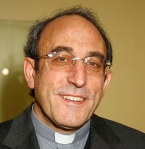 António Augusto Cardinal dos Santos Marto, Cardinal-Priest, Bishop of Leiria-Fátima, Portugal. It is not the first time that Francis creates a cardinal in a country he has previously visited. The bishop of the diocese which includes the major Marian shrine of Portugal and beyond hosted the pope in May of 2017. The 71-year cardinal-elect also serves as vice-president of the Portuguese bishops’ conference and becomes that country’s second cardinal.
António Augusto Cardinal dos Santos Marto, Cardinal-Priest, Bishop of Leiria-Fátima, Portugal. It is not the first time that Francis creates a cardinal in a country he has previously visited. The bishop of the diocese which includes the major Marian shrine of Portugal and beyond hosted the pope in May of 2017. The 71-year cardinal-elect also serves as vice-president of the Portuguese bishops’ conference and becomes that country’s second cardinal.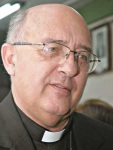 Pedro Ricardo Cardinal Barreto Jimeno, Cardinal-Priest, Archbishop of Huancayo, Peru. In January of this year, Pope Francis visited Peru, so that country also gets a cardinal. The 74-year-old archbishop of Huancayo joins the archbishop of the nation’s capital and is, like him, close to retirement. The cardinal-elect is the second Jesuit to be named in the current batch.
Pedro Ricardo Cardinal Barreto Jimeno, Cardinal-Priest, Archbishop of Huancayo, Peru. In January of this year, Pope Francis visited Peru, so that country also gets a cardinal. The 74-year-old archbishop of Huancayo joins the archbishop of the nation’s capital and is, like him, close to retirement. The cardinal-elect is the second Jesuit to be named in the current batch.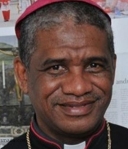 Désiré Cardinal Tsarahazana, Cardinal-Priest, Archbishop of Toamasina, Madagascar. After eight years, Madagascar gets a cardinal again, although he is not the archbishop of the capital, Antananarivo. Instead, tnhe 63-year-old cardinal-designate comes from the coastal see of Toamasina. He is the first archbishop of that see, after is was raised to that status in 2010, and he also serves as president of the Malagassy bishops’ conference.
Désiré Cardinal Tsarahazana, Cardinal-Priest, Archbishop of Toamasina, Madagascar. After eight years, Madagascar gets a cardinal again, although he is not the archbishop of the capital, Antananarivo. Instead, tnhe 63-year-old cardinal-designate comes from the coastal see of Toamasina. He is the first archbishop of that see, after is was raised to that status in 2010, and he also serves as president of the Malagassy bishops’ conference.
 Thomas Aquino Manyo Cardinal Maeda, Cardinal-Priest, Archbishop of Osaka, Japan. Japan was long overdue for a cardinal, and this appointment as not as unique as may be expected. Previous Japanese cardinals came from Tokyo twice, but also one time each from Nagasaki and Osaka. The appointment of the 69-year-old archbishop, who has been in office since 2014, is once more a sign of support for a small Asian Catholic congregation.
Thomas Aquino Manyo Cardinal Maeda, Cardinal-Priest, Archbishop of Osaka, Japan. Japan was long overdue for a cardinal, and this appointment as not as unique as may be expected. Previous Japanese cardinals came from Tokyo twice, but also one time each from Nagasaki and Osaka. The appointment of the 69-year-old archbishop, who has been in office since 2014, is once more a sign of support for a small Asian Catholic congregation.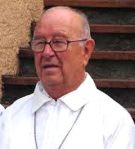 Sergio Cardinal Obeso Rivera, Cardinal-Priest, Archbishop emeritus of Jalapa, Mexico. There’s always a Mexican among Francis’ appointments, it seems, but this time the choice has fallen on an archbishop who has retired since 2007. The 86-year-old’s election is one of honour, then, perhaps in part because of his two presidencies of the Mexican bishops’ conference.
Sergio Cardinal Obeso Rivera, Cardinal-Priest, Archbishop emeritus of Jalapa, Mexico. There’s always a Mexican among Francis’ appointments, it seems, but this time the choice has fallen on an archbishop who has retired since 2007. The 86-year-old’s election is one of honour, then, perhaps in part because of his two presidencies of the Mexican bishops’ conference.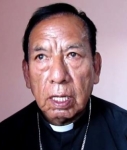 Toribio Cardinal Ticona Porco, Cardinal-Priest, Prelate emeritus of Corocoro, Bolivia. The 81-year-old retired prelate of a small mountain mining town could be said to have truly served on the fringes of the Catholic Church. The economy in the area has been stagnant since 1985, and the new cardinal has worked here for 20 years. He is the third Bolivian cardinal and the first not to come from one of the nation’s two capitals.
Toribio Cardinal Ticona Porco, Cardinal-Priest, Prelate emeritus of Corocoro, Bolivia. The 81-year-old retired prelate of a small mountain mining town could be said to have truly served on the fringes of the Catholic Church. The economy in the area has been stagnant since 1985, and the new cardinal has worked here for 20 years. He is the third Bolivian cardinal and the first not to come from one of the nation’s two capitals.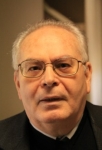 Aquilino Cardinal Bocos Merino, Cardinal-Deacon, Superior General emeritus of the Missionary Sons of the Immaculate Heart of Mary. Pope Francis places great value and emphasis on religious life, so in that sense it is odd that he names only three religious cardinals this time around. Perhaps he tries to balance that with the appointment of the 80-year-old Spanish Claretian who headed his order from 1991 to 2003. The order has produced four other cardinals, two of whom are still alive. It is f
Aquilino Cardinal Bocos Merino, Cardinal-Deacon, Superior General emeritus of the Missionary Sons of the Immaculate Heart of Mary. Pope Francis places great value and emphasis on religious life, so in that sense it is odd that he names only three religious cardinals this time around. Perhaps he tries to balance that with the appointment of the 80-year-old Spanish Claretian who headed his order from 1991 to 2003. The order has produced four other cardinals, two of whom are still alive. It is f Tomorrow, Pope Francis will create his fourth batch of cardinals. A small group of five this time (the smallest since Blessed Paul VI’s creation of four cardinals in 1977), but one unique in its variety, both in the places the new cardinals call home and in their hierarchical positions among the world’s bishops: One is an archbishop of a major metropolitan see, the other an auxiliary bishop; one runs a diocese covering an entire country, the other a sparsely-populated stretch of mountains and jungle, while another resides in a mostly Muslim society.
Tomorrow, Pope Francis will create his fourth batch of cardinals. A small group of five this time (the smallest since Blessed Paul VI’s creation of four cardinals in 1977), but one unique in its variety, both in the places the new cardinals call home and in their hierarchical positions among the world’s bishops: One is an archbishop of a major metropolitan see, the other an auxiliary bishop; one runs a diocese covering an entire country, the other a sparsely-populated stretch of mountains and jungle, while another resides in a mostly Muslim society. This consistory, like others before it, comes with its own developments. This time, it is Archbishop Jean Zerbo of Bamako, Mali, who is at the centre of attention. Yesterday, the news
This consistory, like others before it, comes with its own developments. This time, it is Archbishop Jean Zerbo of Bamako, Mali, who is at the centre of attention. Yesterday, the news  On Thursday, the traditional first Mass of the new cardinals with the Pope will be combined with the Mass for the feast of Saints Peter and Paul, after which the pallia for the past year’s new metropolitan archbishops will be distributed. Under Pope Francis’ new rules, the actual imposition of the pallia will take place in the archbishops home dioceses. It is not mandatory for the new archbishops to attend and collect their pallia themselves, but it is expected that most of this year’s 34 will do so.
On Thursday, the traditional first Mass of the new cardinals with the Pope will be combined with the Mass for the feast of Saints Peter and Paul, after which the pallia for the past year’s new metropolitan archbishops will be distributed. Under Pope Francis’ new rules, the actual imposition of the pallia will take place in the archbishops home dioceses. It is not mandatory for the new archbishops to attend and collect their pallia themselves, but it is expected that most of this year’s 34 will do so. Did Pope Francis today return to the old practice? Archbishop Alfredo Zecca of Tucumán in Argentina retired for health reasons at the age of 68 (seven years before the mandatory retirement age). Today’s daily bulletin duly mentions this, but adds that the Holy Father “at the same time transfer(s) him to the titular see of Bolsena”. Archbishop Zecca is then, at least in title, no longer attached to Tucumán, which he headed as archbishop since 2011. Is this indeed a return to the past, or an indication that Archbishop Zecca can expect another assignment when and if his health permits? Whatever the case may be, the appointment does stand out as unusual.
Did Pope Francis today return to the old practice? Archbishop Alfredo Zecca of Tucumán in Argentina retired for health reasons at the age of 68 (seven years before the mandatory retirement age). Today’s daily bulletin duly mentions this, but adds that the Holy Father “at the same time transfer(s) him to the titular see of Bolsena”. Archbishop Zecca is then, at least in title, no longer attached to Tucumán, which he headed as archbishop since 2011. Is this indeed a return to the past, or an indication that Archbishop Zecca can expect another assignment when and if his health permits? Whatever the case may be, the appointment does stand out as unusual.
 The death of Cardinal Paulo Evaristo Arns at the age of 95 today leads to an interesting change in the College of Cardinals, albeit a ceremonial one with virtually no effect of the day-to-day affairs of that body.
The death of Cardinal Paulo Evaristo Arns at the age of 95 today leads to an interesting change in the College of Cardinals, albeit a ceremonial one with virtually no effect of the day-to-day affairs of that body.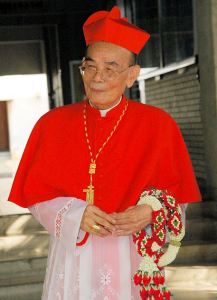 The new protopriest is Cardinal Michael Michai Kitbunchu, 87, retired archbishop of Bangkok and created in Pope Saint John Paul II’s second consistory in 1983 (the same consistory in which Cardinals Danneels and Meisner were created. Cardinal Kitbunchu is protopriest only because his name came before theirs on the official list).
The new protopriest is Cardinal Michael Michai Kitbunchu, 87, retired archbishop of Bangkok and created in Pope Saint John Paul II’s second consistory in 1983 (the same consistory in which Cardinals Danneels and Meisner were created. Cardinal Kitbunchu is protopriest only because his name came before theirs on the official list). The youngest cardinal, at 49, is Dieudonné Nzapalainga (right), the archbishop of Bangui, who was created by Pope Francis yesterday. The oldest is José de Jesús Pimiento Rodriguez, the 97-year-old Archbishop emeritus of Manizales. He was also created by Pope Francis in the consistory of 2015.
The youngest cardinal, at 49, is Dieudonné Nzapalainga (right), the archbishop of Bangui, who was created by Pope Francis yesterday. The oldest is José de Jesús Pimiento Rodriguez, the 97-year-old Archbishop emeritus of Manizales. He was also created by Pope Francis in the consistory of 2015. “Brothers and sisters in Christ, today we mark the sixtieth year of the existence of the Diocese of Rotterdam. “Sixty years, is that worth celebrating?”, some initially wondered. “We celebrated fifty years in a major way. One hundred years would be something.”
“Brothers and sisters in Christ, today we mark the sixtieth year of the existence of the Diocese of Rotterdam. “Sixty years, is that worth celebrating?”, some initially wondered. “We celebrated fifty years in a major way. One hundred years would be something.”